Compact and Highly Sensitive NO2 Photoacoustic Sensor for Environmental Monitoring
Abstract
1. Introduction
2. NO2 Sensor Design
2.1. Detection Wavelength and Excitation Light Source
2.2. Photoacoustic Detection Module
2.3. NO2 PAS Sensor System
3. Optimization and Evaluation of the NO2 Sensor
3.1. Parameters Optimization
3.1.1. Laser Power Dependence of Photoacoustic Signal and Analysis of Saturation Effect
3.1.2. Relationship between Photoacoustic Signal and Pressure
3.2. Performance Evaluation
4. Outdoor Continuous On-line Monitoring of Environmental NO2
5. Conclusions
Author Contributions
Funding
Conflicts of Interest
References
- Liu, K.; Lewicki, R.; Tittel, F.K. Development of a mid-infrared nitrogen dioxide sensor based on Faraday rotation spectroscopy. Sensor. Actuat. B-Chem. 2016, 237, 887–893. [Google Scholar] [CrossRef]
- Wu, T.; Zhao, W.; Chen, W.; Zhang, W.; Gao, X. Incoherent broadband cavity enhanced absorption spectroscopy for in situ measurements of NO2 with a blue light emitting diode. Appl. Phys. B 2008, 94, 85–94. [Google Scholar] [CrossRef]
- Wang, G.; Zhang, R.; Gomez, M.E.; Yang, L.; Levy Zamora, M.; Hu, M.; Lin, Y.; Peng, J.; Guo, S.; Meng, J.; et al. Persistent sulfate formation from London Fog to Chinese haze. Proc. Natl. Acad. Sci. USA 2016, 113, 13630–13635. [Google Scholar] [CrossRef] [PubMed]
- Zheng, H.; Dong, L.; Yin, X.; Liu, X.; Wu, H.; Zhang, L.; Ma, W.; Yin, W.; Jia, S. Ppb-level QEPAS NO2 sensor by use of electrical modulation cancellation method with a high power blue LED. Sens. Actuat. B-Chem. 2015, 208, 173–179. [Google Scholar] [CrossRef]
- Castellanos, P.; Luke, W.T.; Kelley, P.; Stehr, J.W.; Ehrman, S.H.; Dickerson, R.R. Modification of a commercial cavity ring-down spectroscopy NO2 detector for enhanced sensitivity. Rev. Sci. Instrum. 2009, 80, 113107. [Google Scholar] [CrossRef]
- Courtillot, I.; Morville, J.; Motto-Ros, V.; Romanini, D. Sub-ppb NO2 detection by optical feedback cavity-enhanced absorption spectroscopy with a blue diode laser. Appl. Phys. B 2006, 85, 407–412. [Google Scholar] [CrossRef]
- Villena, G.; Bejan, I.; Kurtenbach, R.; Wiesen, P.; Kleffmann, J. Interferences of commercial NO2 instruments in the urban atmosphere and in a smog chamber. Atmos. Meas. Tech. 2012, 5, 149–159. [Google Scholar] [CrossRef]
- Yi, H.M.; Liu, K.; Chen, W.D.; Tan, T.; Wang, L.; Gao, X.M. Application of a broadband blue laser diode to trace NO2 detection using off-beam quartz-enhanced photoacoustic spectroscopy. Opt. Lett. 2011, 36, 481–483. [Google Scholar] [CrossRef]
- Wu, H.; Dong, L.; Zheng, H.; Yu, Y.; Ma, W.; Zhang, L.; Yin, W.; Xiao, L.; Jia, S.; Tittel, F.K. Beat frequency quartz-enhanced photoacoustic spectroscopy for fast and calibration-free continuous trace-gas monitoring. Nat. Commun. 2017, 8, 15331. [Google Scholar] [CrossRef]
- Yin, X.; Dong, L.; Wu, H.; Zhang, L.; Ma, W.; Yin, W.; Xiao, L.; Jia, S.; Tittel, F.K. Highly sensitive photoacoustic multicomponent gas sensor for SF6 decomposition online monitoring. Opt. Express 2019, 27, A224–A234. [Google Scholar] [CrossRef]
- Siciliani de Cumis, M.; Viciani, S.; Borri, S.; Patimisco, P.; Sampaolo, A.; Scamarcio, G.; De Natale, P.; D’Amato, F.; Spagnolo, V. Widely-tunable mid-infrared fiber-coupled quartz-enhanced photoacoustic sensor for environmental monitoring. Opt. Express 2014, 22, 28222–28231. [Google Scholar] [CrossRef] [PubMed]
- Pan, Y.; Dong, L.; Wu, H.; Ma, W.; Zhang, L.; Yin, W.; Xiao, L.; Jia, S.; Tittel, F.K. Cavity-enhanced photoacoustic sensor based on a whispering-gallery-mode diode laser. Atmos. Meas. Tech. 2019, 12, 1905–1911. [Google Scholar] [CrossRef]
- Ma, Y.; Qiao, S.; He, Y.; Li, Y.; Zhang, Z.; Yu, X.; Tittel, F.K. Highly sensitive acetylene detection based on multi-pass retro-reflection-cavity-enhanced photoacoustic spectroscopy and a fiber amplified diode laser. Opt. Express 2019, 27, 14163–14172. [Google Scholar] [CrossRef] [PubMed]
- Dong, L.; Kosterev, A.A.; Thomazy, D.; Tittel, F.K. QEPAS spectrophones: Design, optimization, and performance. Appl. Phys. B 2010, 100, 627–635. [Google Scholar] [CrossRef]
- Wu, H.; Yin, X.; Dong, L.; Jia, Z.; Zhang, J.; Liu, F.; Ma, W.; Zhang, L.; Yin, W.; Xiao, L.; et al. Ppb-level nitric oxide photoacoustic sensor based on a mid-IR quantum cascade laser operating at 52 °C. Sens. Actuat. B-Chem. 2019, 290, 426–433. [Google Scholar] [CrossRef]
- Jahjah, M.; Jiang, W.; Sanchez, N.P.; Ren, W.; Patimisco, P.; Spagnolo, V.; Herndon, S.C.; Griffin, R.J.; Tittel, F.K. Atmospheric CH4 and N2O measurements near Greater Houston area landfills using a QCL-based QEPAS sensor system during DISCOVER-AQ 2013. Opt. Lett. 2014, 39, 957–960. [Google Scholar] [CrossRef]
- Li, S.; Dong, L.; Wu, H.; Sampaolo, A.; Patimisco, P.; Spagnolo, V.; Tittel, F.K. Ppb-level quartz-enhanced photoacoustic detection of carbon monoxide exploiting a surface grooved tuning fork. Anal. Chem. 2019, 91, 5834–5840. [Google Scholar] [CrossRef]
- Pushkarsky, M.; Tsekoun, A.; Dunayevskiy, I.G.; Go, R.; Patel, C.K.N. Sub-parts-per-billion level detection of NO2 using room-temperature quantum cascade lasers. Proc. Natl. Acad. Sci. USA 2006, 103, 10846–10849. [Google Scholar] [CrossRef]
- The HITRAN Database. Available online: http://www.hitran.com. (accessed on 1 July 2019).
- Chen, K.; Gong, Z.; Yu, Q. Fiber-amplifier-enhanced resonant photoacoustic sensor for sub-ppb level acetylene detection. Sens. Actuat. A-Phys. 2018, 274, 184–188. [Google Scholar] [CrossRef]
- Yin, X.; Wu, H.; Dong, L.; Ma, W.; Zhang, L.; Yin, W.; Xiao, L.; Jia, S.; Tittel, F.K. Ppb-level photoacoustic sensor system for saturation-free CO detection of SF6 decomposition by use of a 10 W fiber-amplified near-infrared diode laser. Sens. Actuat. B-Chem. 2019, 282, 567–573. [Google Scholar] [CrossRef]
- Miklós, A.; Hess, P.; Bozóki, Z. Application of acoustic resonators in photoacoustic trace gas analysis and metrology. Rev. Sci. Instrum. 2001, 72, 1937–1955. [Google Scholar] [CrossRef]
- Yin, X.; Wu, H.; Dong, L.; Li, B.; Ma, W.; Zhang, L.; Yin, W.; Xiao, L.; Jia, S.; Tittel, F.K. ppb-level SO2 photoacoustic sensors with a suppressed absorption-desorption effect by using a 7.41 μm external-cavity quantum cascade laser. ACS Sens. 2020, 5, 549–556. [Google Scholar] [CrossRef] [PubMed]
- Besson, J.P.; Schilt, S.; Thevenaz, L. Multi-gas sensing based on photoacoustic spectroscopy using tunable laser diodes. Spectrochim. Acta A Mol. Biomol. Spectrosc. 2004, 60, 3449–3456. [Google Scholar] [CrossRef] [PubMed]
- Miklós, A. Acoustic aspects of photoacoustic signal generation and detection in gases. Int. J. Thermophys. 2015, 36, 2285–2317. [Google Scholar] [CrossRef]
- Szakáll, M.; Huszár, H.; Bozóki, Z.; Szabó, G. On the pressure dependent sensitivity of a photoacoustic water vapor detector using active laser modulation control. Infrared Phys. Techn. 2006, 48, 192–201. [Google Scholar] [CrossRef]
- China National Environmental Monitoring Center. Available online: http://www.cnemc.cn. (accessed on 21 July 2019).
Sample Availability: Samples of the compounds are not available from the authors. |
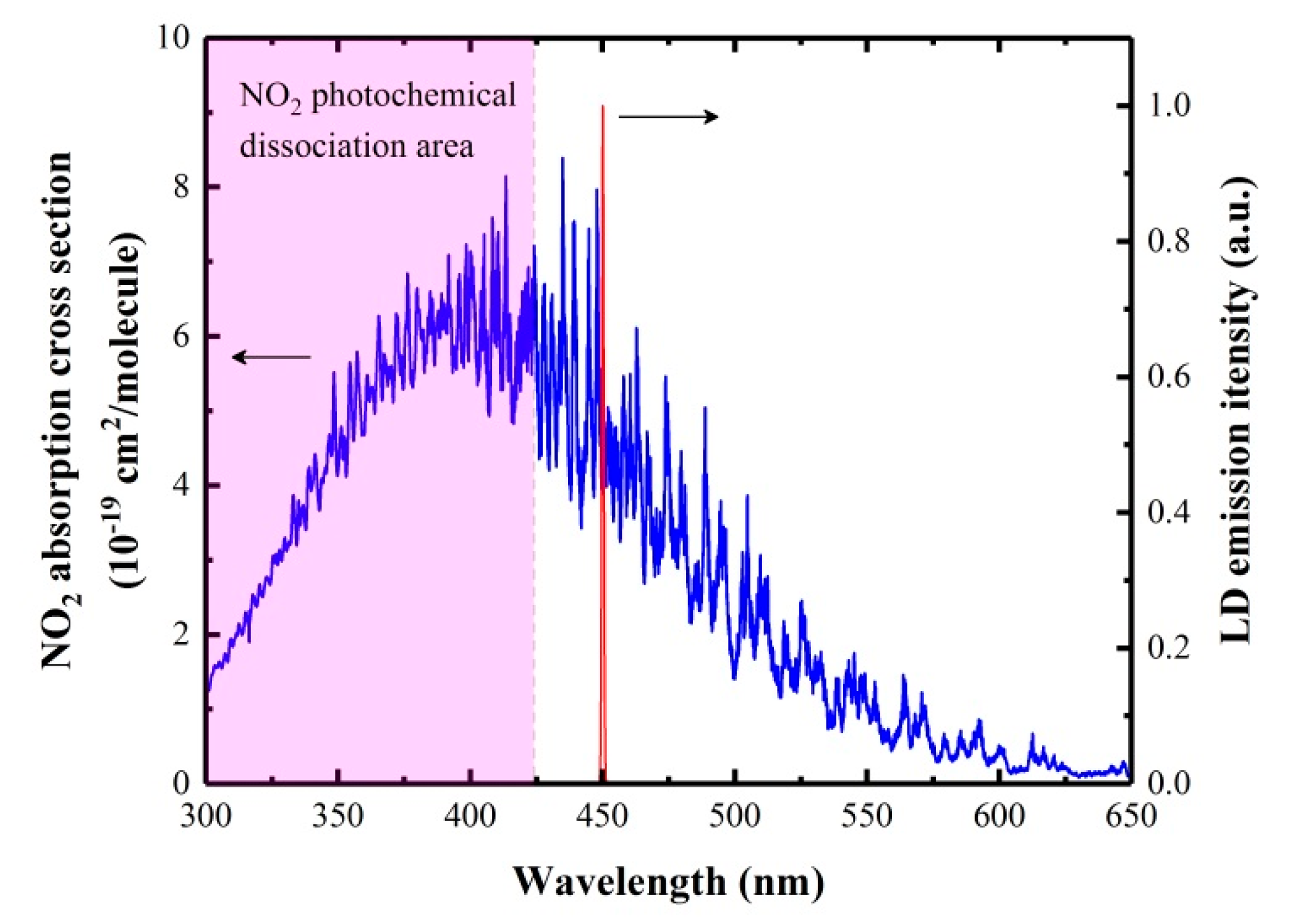
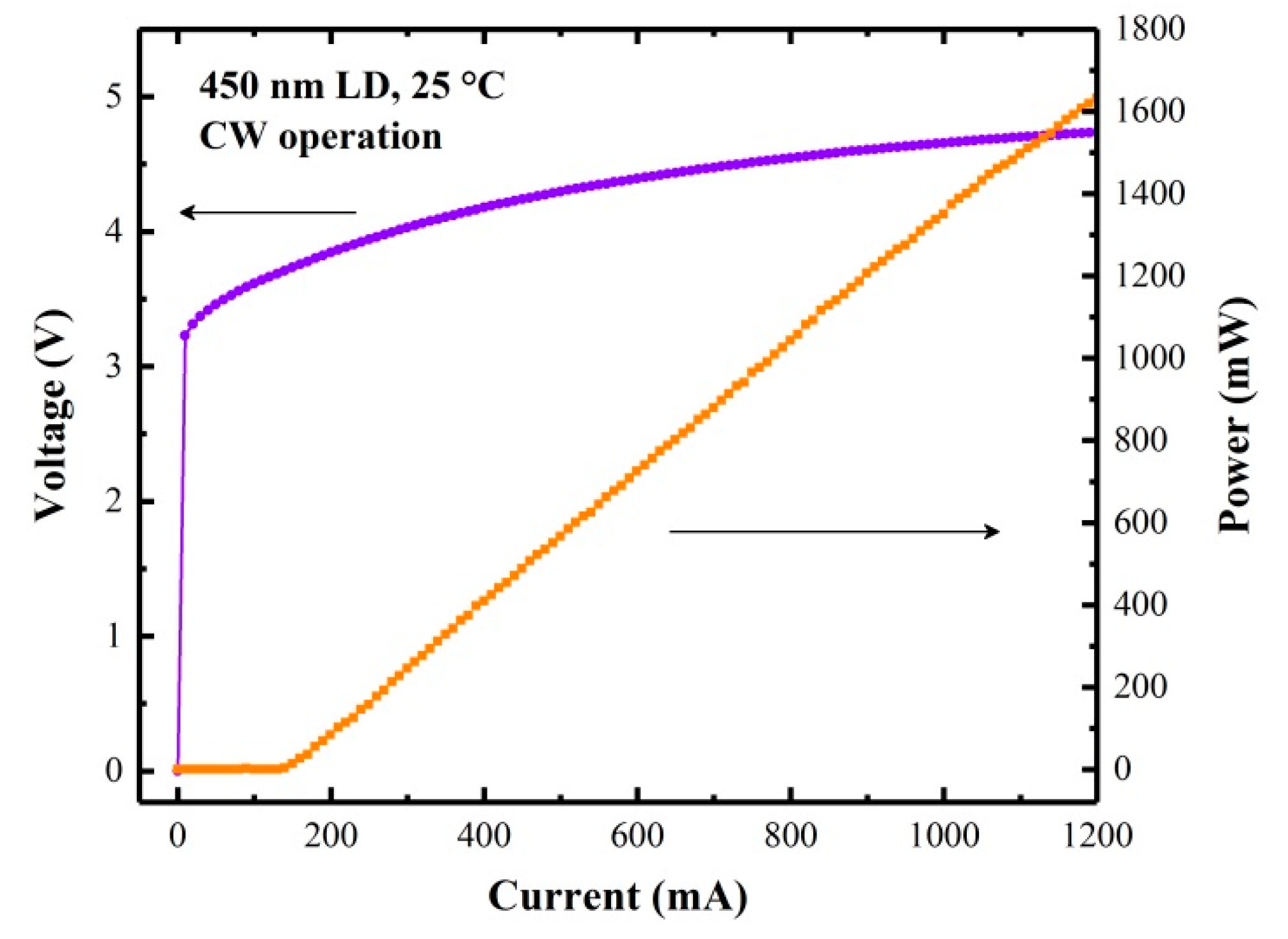
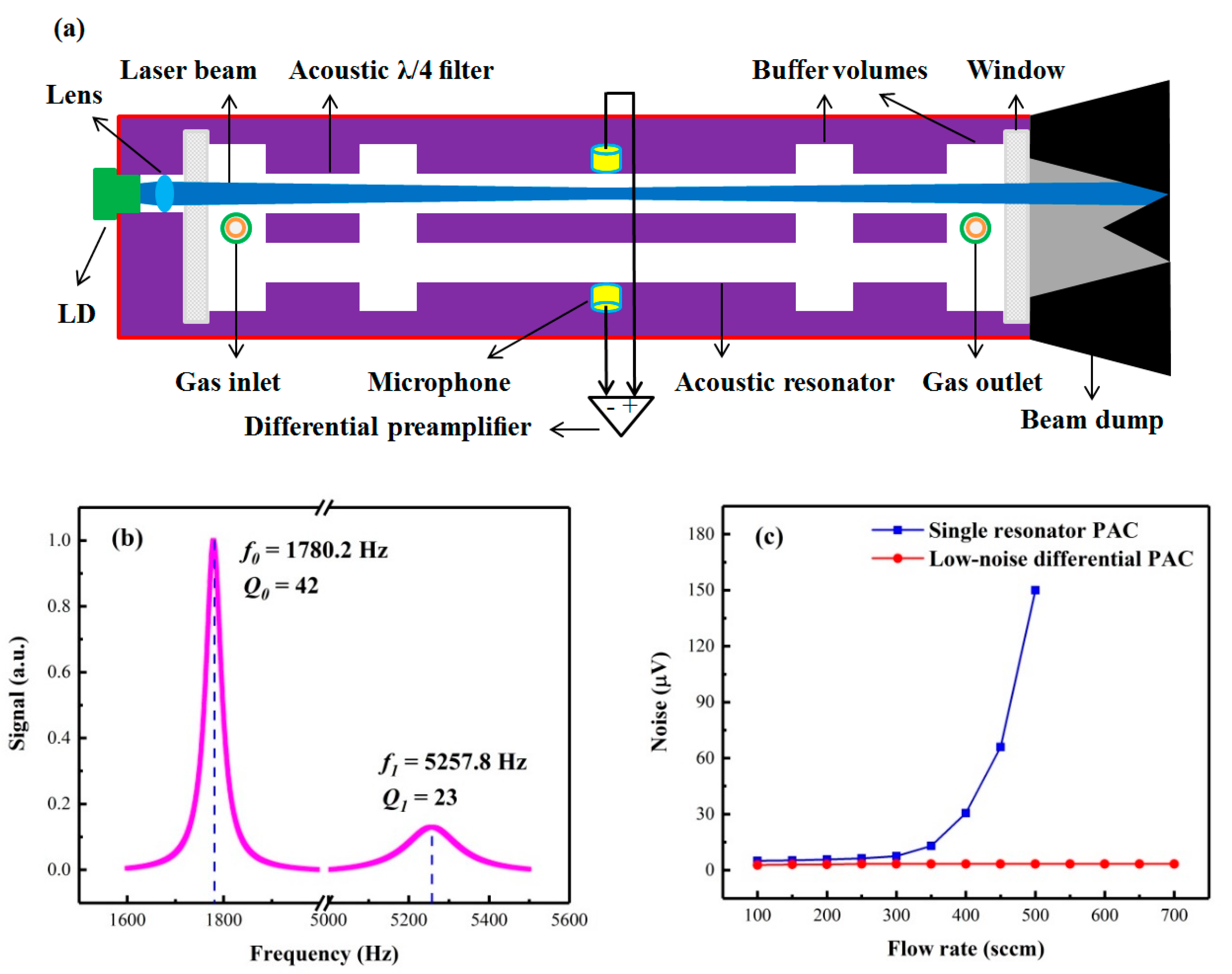
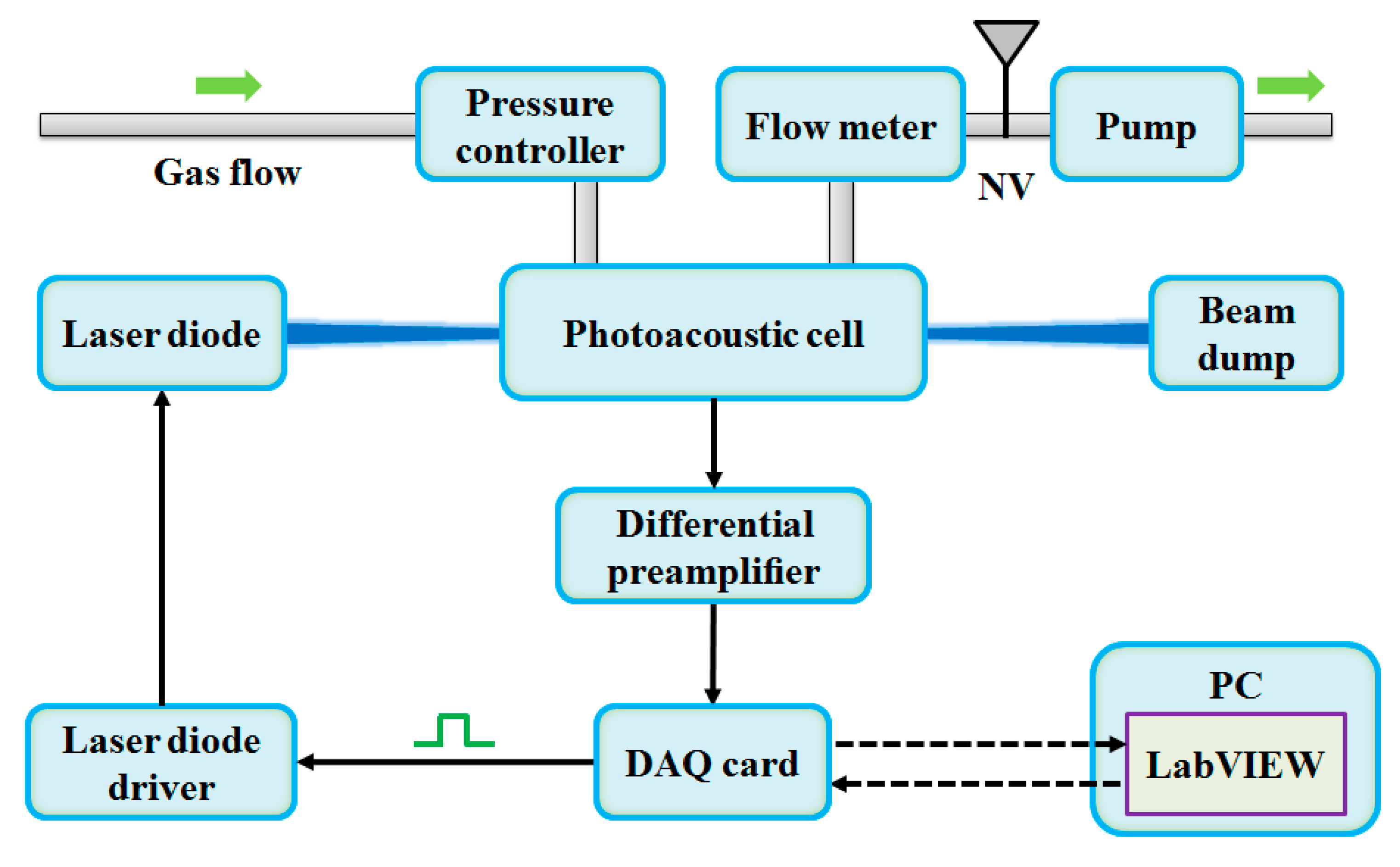

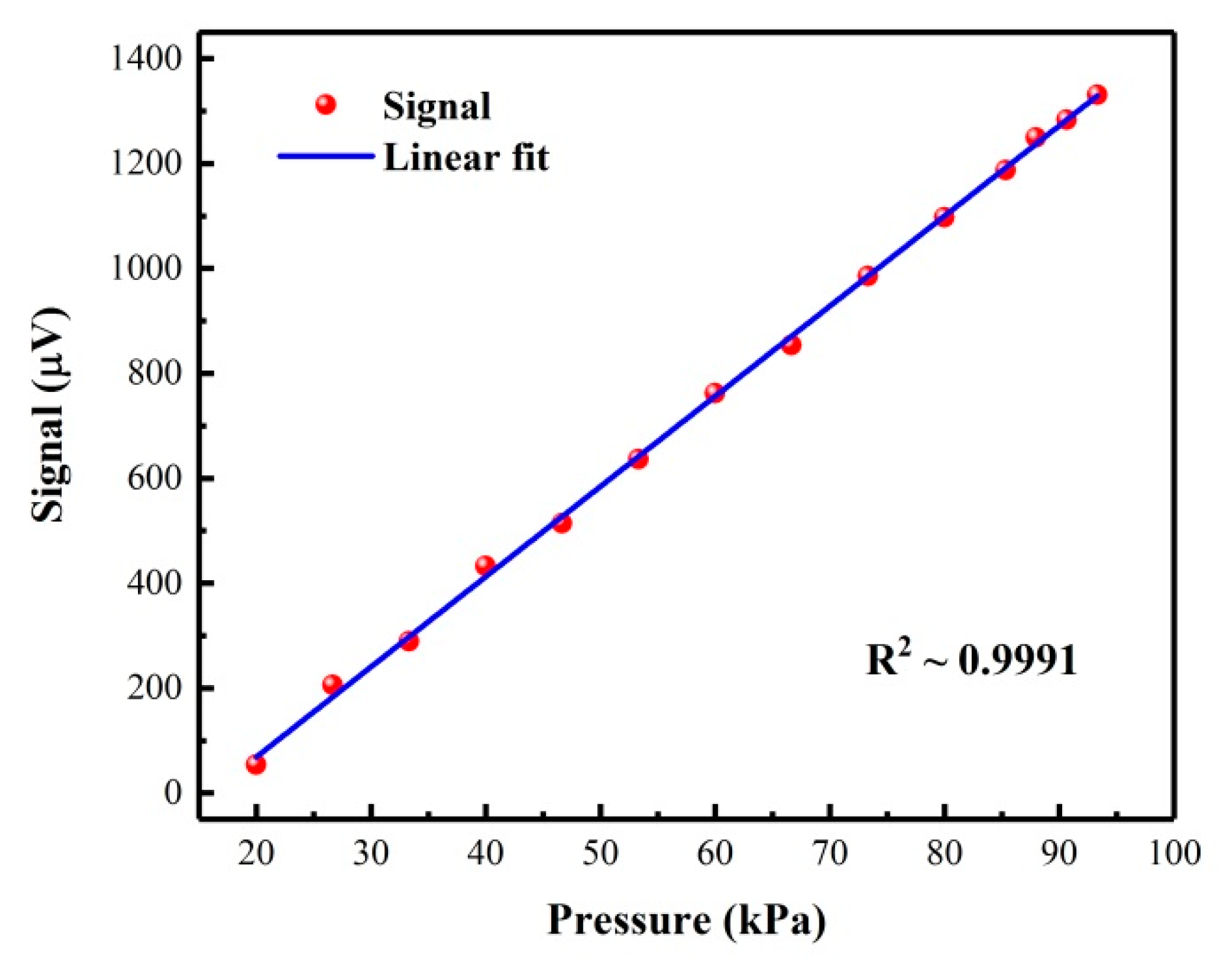
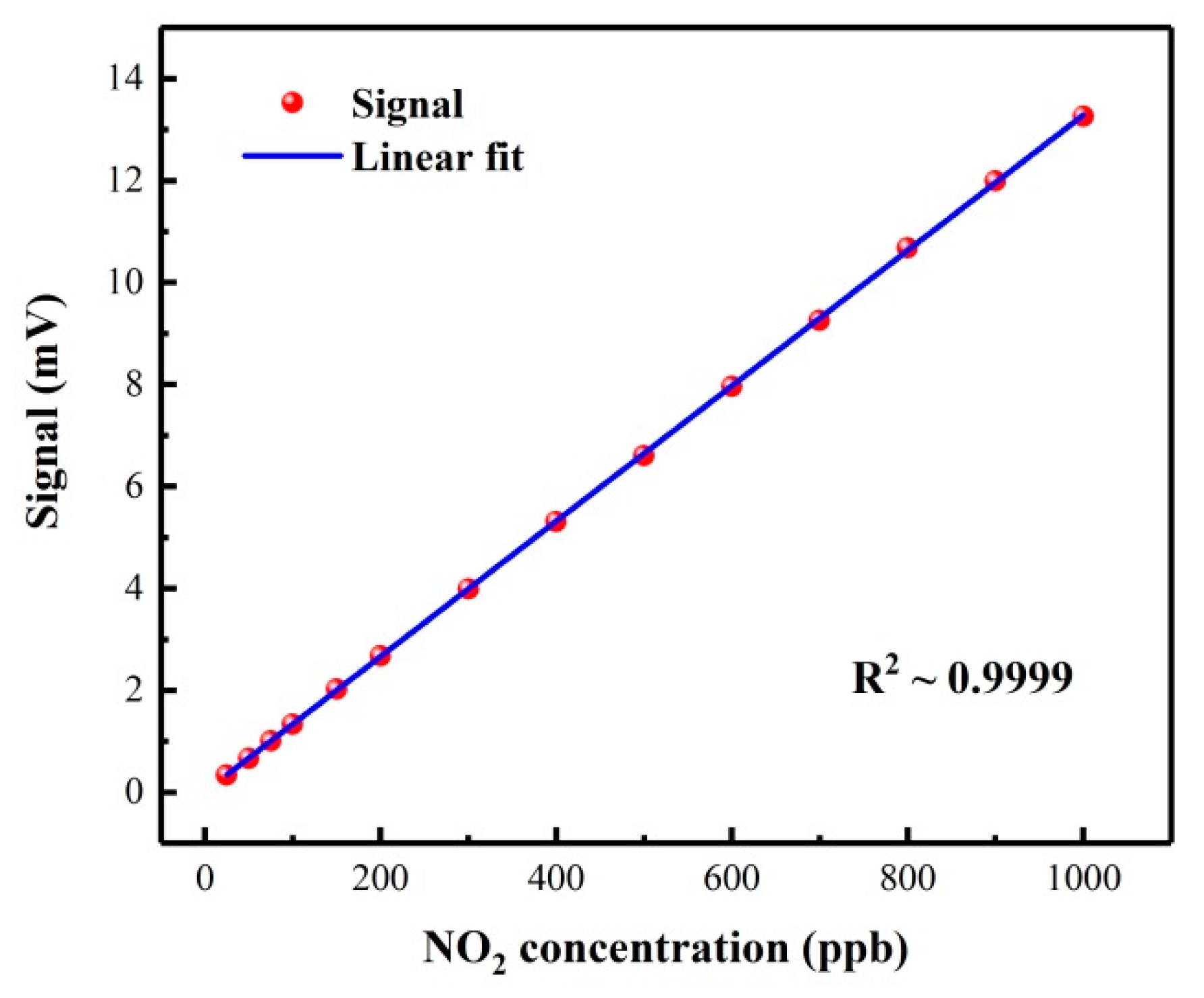
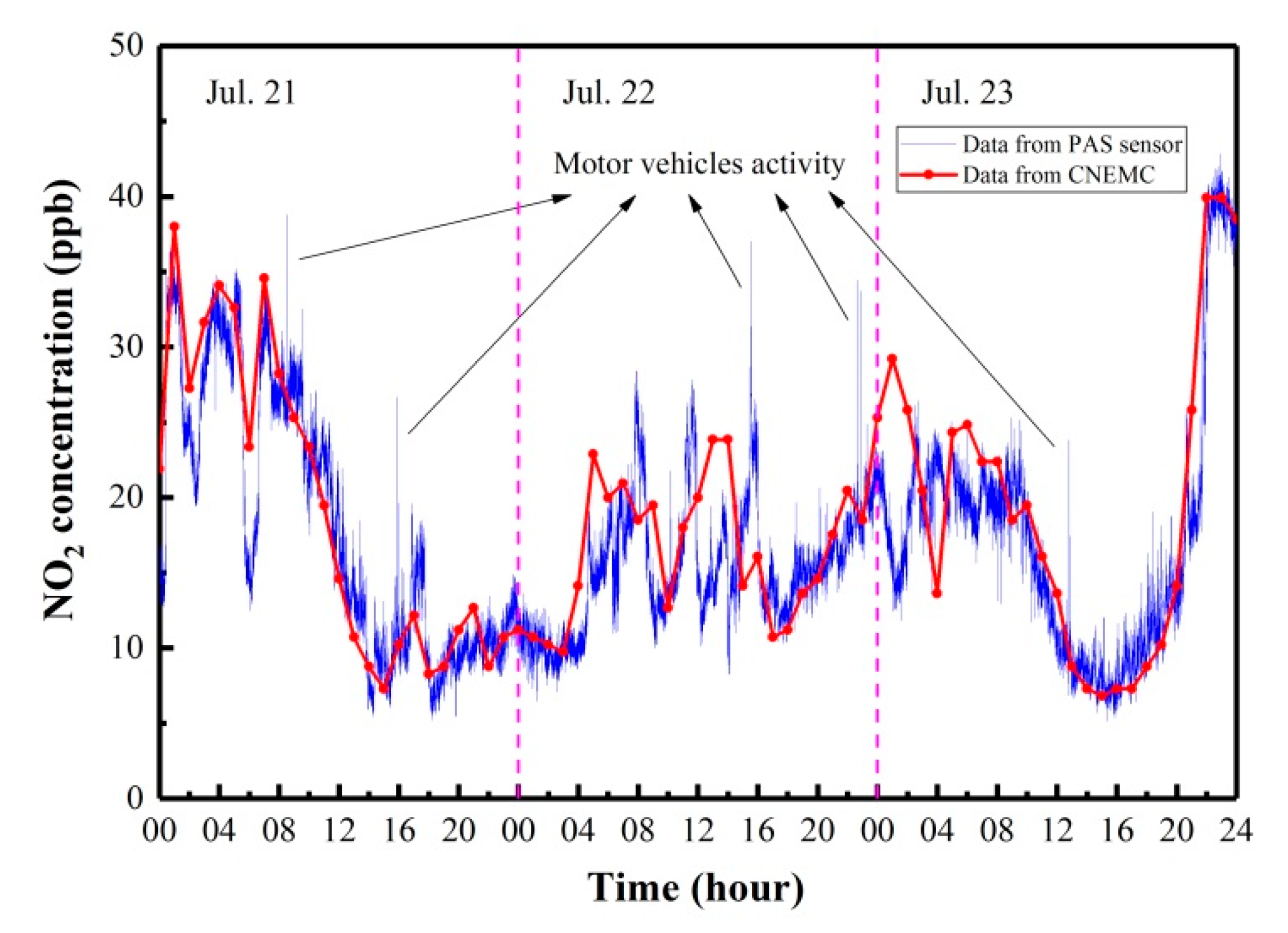
© 2020 by the authors. Licensee MDPI, Basel, Switzerland. This article is an open access article distributed under the terms and conditions of the Creative Commons Attribution (CC BY) license (http://creativecommons.org/licenses/by/4.0/).
Share and Cite
Pan, Y.; Dong, L.; Yin, X.; Wu, H. Compact and Highly Sensitive NO2 Photoacoustic Sensor for Environmental Monitoring. Molecules 2020, 25, 1201. https://doi.org/10.3390/molecules25051201
Pan Y, Dong L, Yin X, Wu H. Compact and Highly Sensitive NO2 Photoacoustic Sensor for Environmental Monitoring. Molecules. 2020; 25(5):1201. https://doi.org/10.3390/molecules25051201
Chicago/Turabian StylePan, Yufeng, Lei Dong, Xukun Yin, and Hongpeng Wu. 2020. "Compact and Highly Sensitive NO2 Photoacoustic Sensor for Environmental Monitoring" Molecules 25, no. 5: 1201. https://doi.org/10.3390/molecules25051201
APA StylePan, Y., Dong, L., Yin, X., & Wu, H. (2020). Compact and Highly Sensitive NO2 Photoacoustic Sensor for Environmental Monitoring. Molecules, 25(5), 1201. https://doi.org/10.3390/molecules25051201








